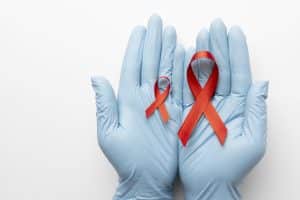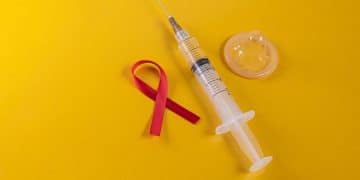Latest advances in HIV prevention and treatment strategies for 2025


In 2025, the latest advances in HIV prevention are reshaping how we combat one of the most persistent global health challenges.
From next-generation injectables to digital health tools and groundbreaking community initiatives, the landscape is evolving fast, and with it, our hopes for a future free of transmission.
Whether you’re directly impacted or simply want to stay informed, this guide explores the most promising developments transforming HIV care today.
Emerging prevention tactics for HIV
As global health strategies evolve, emerging HIV prevention tactics are reshaping how we protect vulnerable populations.
The year 2025 introduces a more inclusive and technology-driven approach to slowing transmission, with tools that are not only effective but more accessible than ever.
A key advancement is the development of long-acting injectable medications, such as Lenacapavir, which requires only two doses per year.
Backed by strong clinical results and recently recommended by the World Health Organization, this option is transforming HIV prevention by removing the daily burden of adherence and expanding protection for those with inconsistent access to healthcare.
The combination of biomedical innovation, digital tools, and community-centered initiatives creates a comprehensive prevention strategy that adapts to real-world needs.
Long-acting injectables improve adherence and equity
Injectables like Lenacapavir and Cabotegravir are reshaping prevention for individuals who face barriers to daily pills. These options offer more freedom and privacy, especially in communities where stigma remains high.
They also reduce the risk of missed doses, improving the effectiveness of HIV prevention on a population level.
Mobile technology boosts patient engagement
Smartphone apps and SMS-based platforms now play a critical role in HIV prevention, helping users track medication schedules, access educational content, and receive reminders for regular testing.
These tools increase personal accountability while making healthcare more responsive and accessible, particularly for younger and tech-savvy individuals.
Self-testing empowers early detection
Rapid HIV tests available in pharmacies and clinics allow people to screen themselves at home with complete confidentiality.
Early diagnosis is essential for starting treatment quickly and reducing onward transmission, making self-testing a cornerstone of modern HIV prevention strategies.
Community outreach strengthens trust and inclusion
Prevention programs led by peers and local leaders help tailor interventions to cultural contexts. These initiatives foster trust, encourage participation, and bridge the gap between public health systems and at-risk communities.
Engaging directly with those affected ensures that HIV prevention efforts are not only clinically sound but socially sustainable.
Combining old and new strategies for long-term success
While emerging tactics are gaining traction, proven methods such as PrEP and treatment as prevention (TasP) remain fundamental.
When combined with new technologies and outreach models, these approaches form a multi-layered defense that addresses both biological and social dimensions of HIV prevention.
Together, these innovations are not just improving prevention, they are redefining how we approach public health. The key moving forward is integration, equity, and sustained investment in solutions that work across different realities.
Breakthroughs in HIV treatment
Major scientific progress is redefining how we treat HIV. The most recent breakthroughs are not only extending life expectancy but also improving the quality of care, transforming the virus into a manageable chronic condition for millions.
These developments also complement HIV prevention efforts by reducing viral load and lowering transmission risks.
One of the most promising shifts is the growing availability of long-acting antiretroviral therapies, which drastically reduce how often patients need to take medication.
By moving from daily pills to bi-monthly or even twice-yearly injections, treatment adherence is improving, particularly in populations with limited healthcare access.
Injectable therapies are transforming long-term care
Medications like Cabotegravir are gaining widespread adoption due to their ability to maintain viral suppression with minimal dosing. This innovation eases the burden of daily medication and offers more privacy and autonomy for patients.
These same long-acting injectables are also being studied and approved for use in HIV prevention, creating dual-purpose options for both treatment and protection.
Broadly neutralizing antibodies offer hope for resistant strains
Advanced trials are exploring broadly neutralizing antibodies (bNAbs), which can target multiple HIV variants at once.
These antibodies have the potential to serve as standalone therapies or in combination with antiretrovirals, especially for patients with drug-resistant HIV. Early-stage results show reduced viral loads and enhanced immune responses.
Gene editing may bring us closer to a cure
Gene editing research, including CRISPR-based approaches, is progressing rapidly. While still in experimental stages, these techniques aim to eliminate latent HIV reservoirs from the body.
If successful, gene therapy could shift the global conversation from treatment to full eradication, aligning with cure-centered goals outlined by research institutions like ViiV Healthcare.
Personalized treatment supports better outcomes
Tailoring treatment plans to a patient’s genetic, lifestyle, and immunological profile is becoming more common. Personalized care not only improves medication tolerance but also enhances long-term success.
This aligns with the broader strategy of integrating HIV prevention with treatment by ensuring patients remain undetectable and untransmittable.
Telehealth enhances continuity of care
Digital consultations and remote monitoring allow patients to remain engaged with their care teams without geographical barriers.
Telehealth platforms are particularly beneficial for those in rural areas or with mobility challenges, helping ensure uninterrupted treatment. These services also support adherence, reinforcing both treatment and HIV prevention goals.
Together, these breakthroughs signify a turning point in the global response to HIV. They offer patients more freedom, better outcomes, and a pathway toward long-term control, and eventually, a possible cure.
The role of community engagement

Community engagement continues to be a foundation for the success of global HIV strategies. As prevention and treatment efforts evolve, involving local voices becomes essential to reach populations that remain underserved or hesitant to seek care.
In 2025, many of the most impactful outcomes in HIV prevention are emerging from community-led initiatives that place people at the center of the solution.
Programs that integrate community participation consistently report better outcomes in education, early testing, and treatment adherence.
When individuals feel included in decisions about their health, they are more likely to engage with and trust the system offering support.
Trust and inclusion open the door to prevention
One of the key benefits of community engagement is the trust it creates between health professionals and local populations.
Community leaders and peer educators are uniquely positioned to deliver information about HIV prevention in ways that are culturally appropriate and sensitive to local realities.
This helps reduce fear and encourages individuals to seek care before complications arise.
Peer-led support networks promote long-term adherence
Support groups facilitated by people living with HIV provide emotional safety and practical guidance. These networks allow individuals to share experiences and solutions while building a sense of belonging.
When paired with reliable healthcare services, peer support becomes a powerful ally in consistent treatment and continued engagement with HIV prevention measures.
Locally informed strategies lead to stronger outcomes
Community members offer insights that centralized health systems often overlook. Their lived experiences guide the development of interventions that are better adapted to the unique challenges faced in each region.
These contributions ensure that HIV prevention programs are not only effective but also relevant and welcomed.
Community-driven research brings authenticity to public health
Including affected individuals in the design and implementation of research helps shape more accurate data and realistic strategies. This collaboration allows scientists and policymakers to refine prevention tools based on what works in practice, not just in theory.
It strengthens the connection between scientific progress and lived experience.
Collaboration enhances reach and sustainability
Working together, local leaders, nonprofits, and healthcare providers can expand access to critical services.
In areas where formal health systems are limited, these partnerships are vital to bringing HIV prevention tools to those most at risk. Community engagement does not replace professional care but enhances its impact by grounding it in trust and inclusion.
By prioritizing community-led solutions, we build a more equitable and sustainable path toward ending the HIV epidemic. Engagement is not just a strategy.
It is a commitment to understanding, empowering, and supporting people where they are and with what they need. This human connection is what turns innovation into lasting progress in HIV prevention.
Technological innovations in healthcare
In 2025, technological innovation is accelerating progress in global health, particularly in how we approach HIV prevention and treatment.
Tools once considered futuristic are now being used to connect patients with providers, personalize care, and streamline access to lifesaving services. These advancements are closing the gap between healthcare systems and those they aim to serve.
The integration of digital health tools, real-time monitoring, and artificial intelligence is transforming how prevention programs are delivered.
With these solutions, individuals have more control over their health while healthcare professionals gain deeper insights to make faster and more informed decisions.
Telehealth expands access to HIV prevention
Remote consultations have become a critical tool in reaching individuals in underserved regions. Telehealth allows patients to receive education, testing guidance, and medication follow-ups without leaving their homes.
This model has proven especially effective in rural communities where traditional clinics are not readily accessible, ensuring continuity of care and support for HIV prevention efforts.
Wearable health devices improve adherence and monitoring
Smartwatches and biometric trackers can monitor vital signs and medication schedules. These devices send real-time data to healthcare teams, alerting them to changes that may indicate complications or missed doses.
For people managing HIV, this level of monitoring improves both treatment precision and overall engagement with HIV prevention.
AI predicts risk and tailors prevention strategies
Artificial intelligence is being used to identify individuals most at risk of HIV infection by analyzing behavioral, social, and health data. AI-driven models help allocate prevention resources more effectively and ensure early intervention.
These technologies also support personalized treatment plans, increasing adherence and success rates across diverse populations.
Mobile apps empower patients with real-time tools
Mobile applications now serve as digital health companions. Users can receive reminders to take medication, book virtual appointments, and access verified information about HIV prevention strategies.
The convenience and privacy of mobile apps encourage proactive participation in care routines, especially among young people and those newly diagnosed.
Diagnostic innovation enables faster detection and response
Rapid HIV tests supported by digital platforms allow for earlier diagnosis and faster linkage to care. These tools help reduce delays in starting treatment and align with public health goals of early intervention.
Faster diagnosis also strengthens the relationship between HIV prevention and timely treatment, reducing transmission risks.
By embracing technological advancements, healthcare providers and patients are working together in new ways to tackle HIV. Digital tools do not replace human care but enhance it, making prevention smarter, more responsive, and more inclusive.
As we continue to integrate these solutions into everyday practice, the future of HIV prevention becomes not only more efficient but more equitable.
Global initiatives impacting HIV strategies
Global cooperation plays a fundamental role in expanding the reach and effectiveness of HIV prevention.
Through coordinated efforts among international agencies, local governments, and nonprofits, resources are being mobilized to implement programs that reduce infections and improve quality of life across all regions.
These initiatives not only deliver funding and medical tools, but also guide public health policies with evidence-based strategies.
As a result, HIV prevention is becoming more inclusive, science-driven, and adapted to the unique challenges of each country.
UNAIDS provides unified global leadership
The Joint United Nations Programme on HIV/AIDS unites governments, civil society, and researchers to accelerate global action.
UNAIDS supports data sharing, advocacy, and monitoring of national responses, helping countries align their HIV prevention goals with international standards.
PEPFAR expands access in over 50 countries
The U.S. President’s Emergency Plan for AIDS Relief remains one of the largest contributors to global HIV efforts. Its programs focus on expanding treatment, scaling testing infrastructure, and integrating HIV prevention into local healthcare systems.
With a strong emphasis on sustainability, PEPFAR builds long-term capacity in the regions it serves.
The Global Fund invests in healthcare transformation
By supporting local health initiatives that combat HIV, tuberculosis, and malaria, the Global Fund empowers communities with tools and funding to lead their own responses.
Its partnerships prioritize equitable access to prevention services and treatments, particularly in low- and middle-income countries.
WHO sets the scientific foundation for prevention
The World Health Organization provides updated clinical guidelines and prevention recommendations based on the latest research.
In 2025, WHO’s endorsement of long-acting injectables like Lenacapavir reflects its commitment to promoting the most effective strategies for global HIV prevention.
International collaboration fuels innovation
These global partnerships have spurred a wave of research into next-generation therapies and vaccines.
Collaboration between governments, pharmaceutical companies, and health agencies has led to promising advancements in long-term treatments and prevention tools.
This global research effort also includes cure-oriented initiatives backed by organizations like ViiV Healthcare.
Shared knowledge improves program effectiveness
When countries share data and success stories, they inspire one another to refine their approaches. Best practices from one region can be adapted to suit another, creating a flexible and continually improving global framework for HIV prevention.
By working together, the international community is not only extending the reach of prevention tools but also reshaping what is possible in the fight against HIV.
These initiatives prove that unified action, grounded in science and equity, can bring the world closer to ending the epidemic.
Future challenges and opportunities in HIV care

As we move deeper into 2025, the future of HIV prevention and care is shaped by both critical obstacles and encouraging breakthroughs.
While long-acting treatments and personalized medicine are opening new doors, the social and structural barriers that hinder progress continue to demand global attention.
One of the most persistent challenges is the stigma surrounding HIV. In many communities, fear of judgment and discrimination still prevents individuals from seeking testing or accessing lifesaving treatment.
Combating this stigma requires long-term educational efforts, public awareness campaigns, and inclusion of community voices to normalize the conversation around HIV prevention.
Access to healthcare remains uneven across regions. Rural and underserved populations often face logistical and financial hurdles that delay or interrupt care.
Although telehealth and mobile health services have improved access in some areas, consistent infrastructure and investment are still needed to ensure these solutions reach the most vulnerable.
Drug resistance and limited funding threaten progress
Another growing concern is the evolution of drug-resistant HIV strains. As the virus adapts to existing medications, researchers are under pressure to develop more advanced therapies.
Breakthroughs such as broadly neutralizing antibodies and gene-editing tools hold promise, but these innovations must move beyond clinical trials to make a global impact.
At the same time, funding for HIV initiatives is becoming increasingly unstable. Many nations face economic constraints that affect both prevention programs and access to newer treatments.
Without sustained international support, the gap between innovation and implementation could widen, especially in low-income settings where HIV prevention is most urgently needed.
New technologies and global collaboration offer real hope
On the opportunity side, digital health tools have transformed how care is delivered. Mobile apps now help patients track medications, access virtual consultations, and stay informed about HIV prevention strategies.
These platforms increase engagement, especially among younger generations, and help healthcare providers respond more quickly to patient needs.
Equally important is the global push for collaboration. Organizations like the WHO and ViiV Healthcare are investing in research and sharing clinical data to drive equitable access to new treatments and vaccines.
These efforts not only accelerate scientific progress but also create unified prevention strategies that adapt to different cultural and healthcare environments.
Looking ahead, the success of HIV prevention depends on how well we balance innovation with inclusion.
By addressing inequality, fighting stigma, and reinforcing global cooperation, the next decade has the potential to redefine what HIV care means for millions of people around the world.
Conclusion: A Turning Point for HIV Prevention in 2025
The evolving landscape of HIV prevention in 2025 marks a decisive moment in the global effort to end HIV transmission.
With the rise of long-acting medications, expanded access to care, and stronger community-based approaches, the tools to reshape public health are finally within reach.
One of the most significant breakthroughs is the endorsement of injectable Lenacapavir for HIV prevention, now officially recommended by the World Health Organization.
This innovative treatment provides extended protection with only two injections per year, opening the door to more effective prevention for people who face barriers to daily medication.
At the same time, research into a potential cure for HIV is gaining traction.
Organizations like ViiV Healthcare are leading studies that aim to eliminate the virus from the body entirely, shifting the long-term vision of HIV prevention and care toward lasting remission and cure.
Despite these advances, the road ahead requires continued focus on equity, education, and community engagement. Stigma remains a major obstacle, preventing individuals from seeking testing and care.
Many underserved populations still struggle with limited access to healthcare services, even as new treatments become available.
To make real progress in HIV prevention, we must prioritize inclusive healthcare systems, invest in global research, and ensure that innovation reaches every corner of the world.
The integration of telehealth, personalized medicine, and community leadership creates new possibilities for proactive, patient-centered care.
As 2025 unfolds, it is clear that the fight against HIV has entered a new phase.
By embracing science, supporting global collaboration, and amplifying the voices of affected communities, we can build a future where HIV prevention is not only effective, but accessible to all.
The opportunity is real. The responsibility is shared. The future of HIV prevention begins now.
FAQ – Frequently Asked Questions about HIV Care
What are the main challenges in HIV care?
The main challenges include stigma, access to healthcare, funding limitations, and the evolution of drug-resistant strains of HIV.
How does community engagement impact HIV strategies?
Community engagement fosters trust and participation, allowing programs to be tailored to the specific needs of populations, leading to more effective health interventions.
What role does technology play in HIV treatment?
Technology improves access to care through telehealth services, enhances patient monitoring with wearable devices, and supports personalized treatment plans.
What opportunities exist for improving HIV care?
Opportunities include advancements in treatments, collaboration on international research, and increased emphasis on patient-centered care solutions.
Liked the article?





